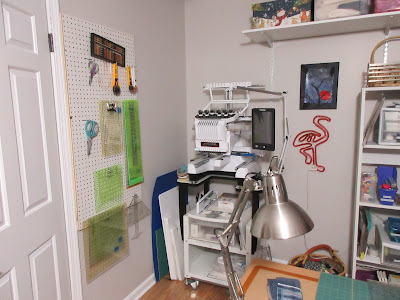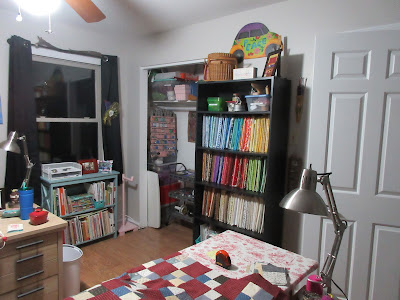PANTOGRAPHS, PATTERNS OR FREE MOTION AND YOUR QUILT
The saying goes that “it is not a quilt until it’s
quilted.” With that said, which process will you choose, which pantograph or
pattern and who, if not you, to finish the project?
The list of considerations is long:
· Hand
quilting…traditional, historical, and time consuming. But not out of the
question.
· Sewing
Machine…There are those that wouldn’t have it any other way. Not as time
consuming as by hand, it is a tad bit difficult as the quilt gets larger, and I’m
told a Seam Ripper needs to be close by.
· Sit-down
Longarm…For those that in the past used their sewing machines this is a welcome
addition to the possibilities when finishing the project is undertaken. Still
moving the quilt sandwich, probably some adhesive or pins involved but with a
much larger surface area to support the quilt and a deeper throat to maneuver
in…a huge step to shorten the time to complete a project.
· Another
option may be a mid-arm hoop rack for your sewing machine or even a Sit-down Machine.
A little more time consuming because the surface area of the quilt being
attended to is smaller and requires more maneuvering to cover all of the area needed
to be quilted. A hoop rack has a place…you are not moving the quilt sandwich
but the machine.
· Then there is the Longarm Machine. The
absolute first consideration is, what can you afford? I’ve commented more than
once there is a Chevy parked in our Longarm Room. Not really, but a Honda
Accord sold in 2011 for the same price.
· Our
selection was narrowed down to two choices after a year of trying, researching,
weighing the cost and the capabilities, maintenance and needs we desired. With
few exceptions, minor at best, our selection has provided hundreds if not
thousands of hours (currently over 1900 projects) over the last 13+ years.
Maintenance, minimal, only two situations where I needed support…both handled
over the phone. A drop of oil daily and simple routine cleaning. Not to mention
the only manufacturer that has a Pantograph system utilizing a computer tablet
that eliminates paper pantographs for hand guided capability. We have never
considered a computer driven system, i.e. Innova’s Mach 3, Gammill’s Statler or
Bernina’s Q-matic. The only three systems I would ever consider. You get what
you pay for…and you pay for either of these with many, many pennies. I’m sure
there are many longarm quilters that have had great success with other brands…we
just never experienced a high confidence it them. Gammill, Innova and now
Bernina all have a long history in sewing machine tech and advancement. I like
the industrial feel and presence these three emulate. I regress.
· No
matter the method, hand, machine, mid-arm, longarm or like Marrianne Fons told
me once, “I longarm by check.” What’s next?
· The
two major topics are thread color and pattern choice.
· Thread
color for me is the simplest. A light, blending color to disappear into the
quilt. I prefer light threads blended into the fabrics rather than darker
threads. When there is a abundance of dark fabrics it is usually the only time
I would recommend dark threads. One of the reasons I strongly believe in the
consulting process with the piecer…their idea may be and has been totally opposite.
In the end it is the piecers desires I want to compliment. I’ve always felt
that the darker threads on lighter fabrics are a distraction, seen first. I
think the craft of the quilter/piecer should be seen first. One reason I’m not
a huge fan of free motion quilting…to me…more often than not, the quilting is
the first thing you see, and the thread count is frequently way up there.
· Next
up is pantograph/pattern choice. I have two avenues. One, themed pantograph. A
quilt with a butterfly theme is receptive to a butterfly pantograph. Then again…the
theme is pronounced and is readily acceptable for a pantograph that simply
provides texture to the quilt. I enjoy working with patterns that give the
quilt a sense of movement and texture. Texture works in both cases…where theme
is obviously defined.
· Themed…
· Texture…
· It
is a matter of taste, choice, preference, likes and dislikes…on and on.
· My
goal is to compliment your quilt. It is one of those things, in most cases, where
we put our heads together and come as close as possible to the vision the
quilter/piecer had when the inspiration reached out and reached for their creativity
and the next heirloom from the sewing room.
· Quilt till you wilt…we do.









.jpg)












